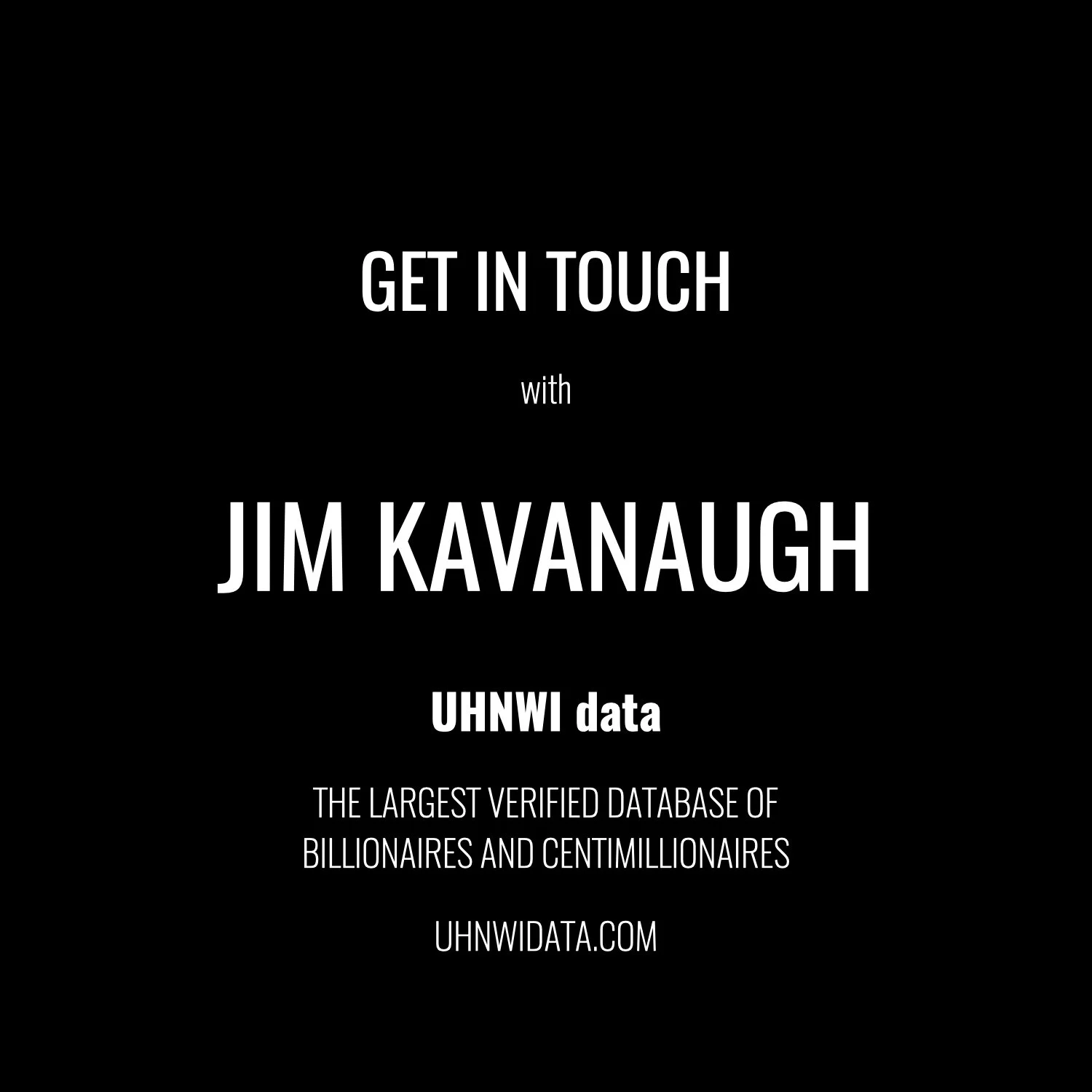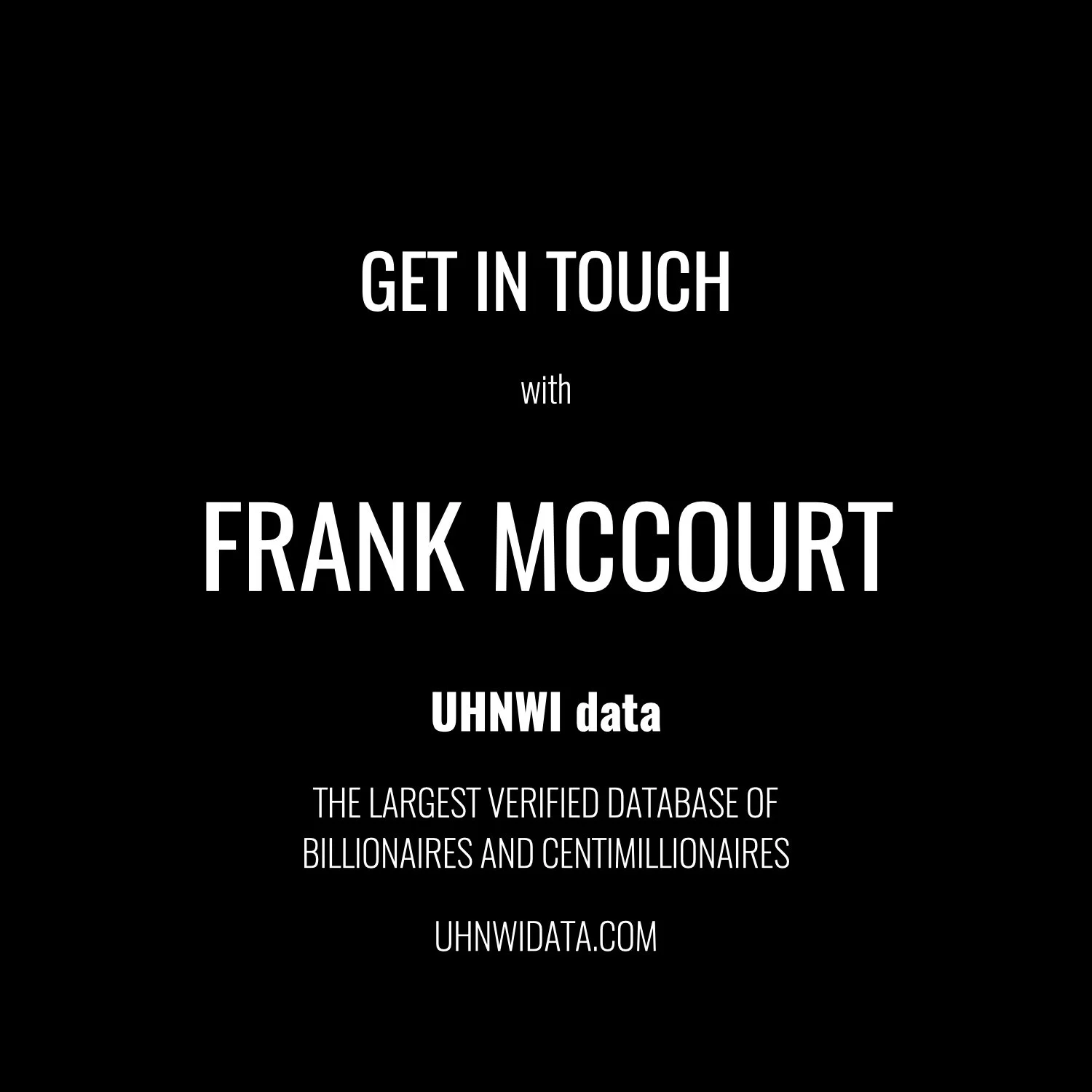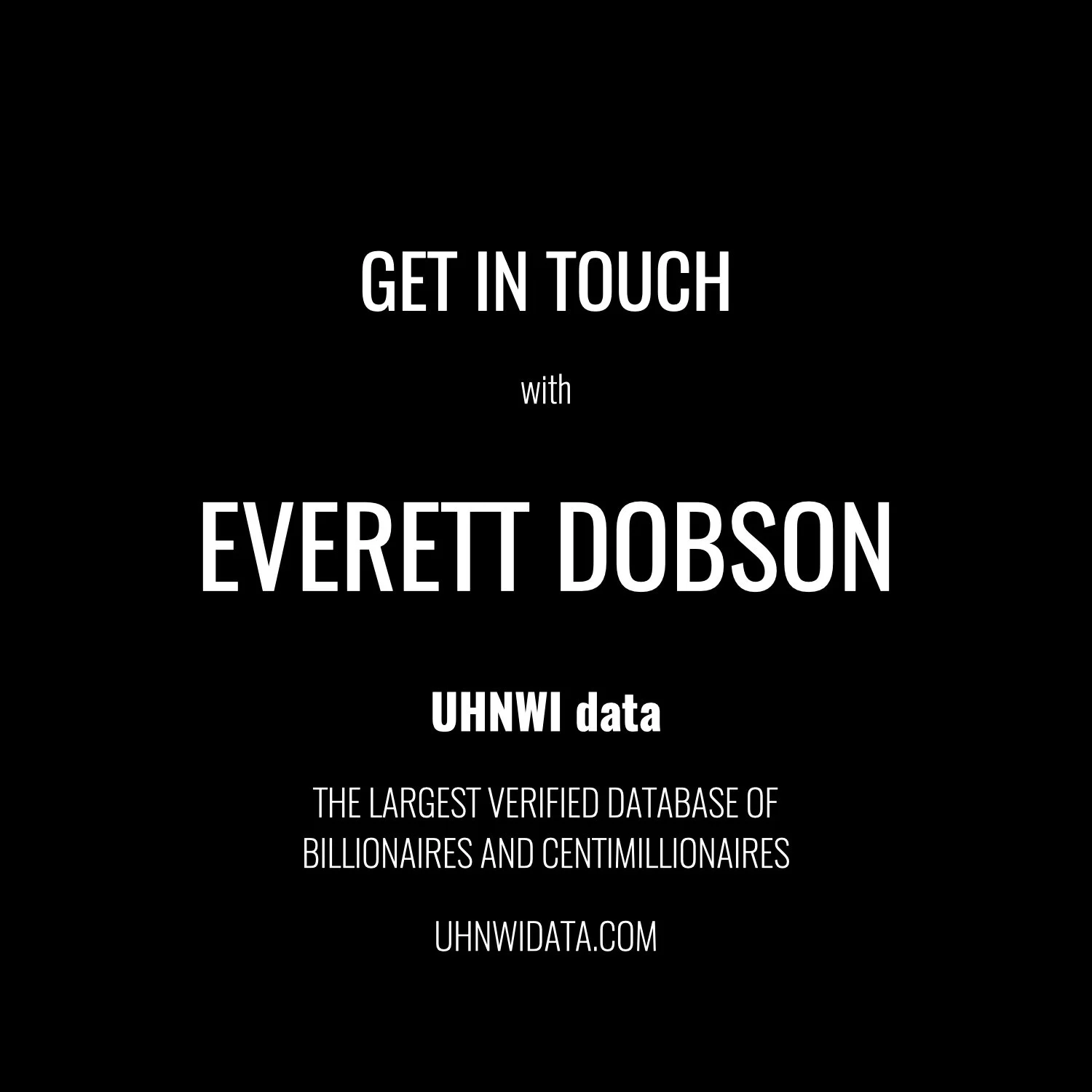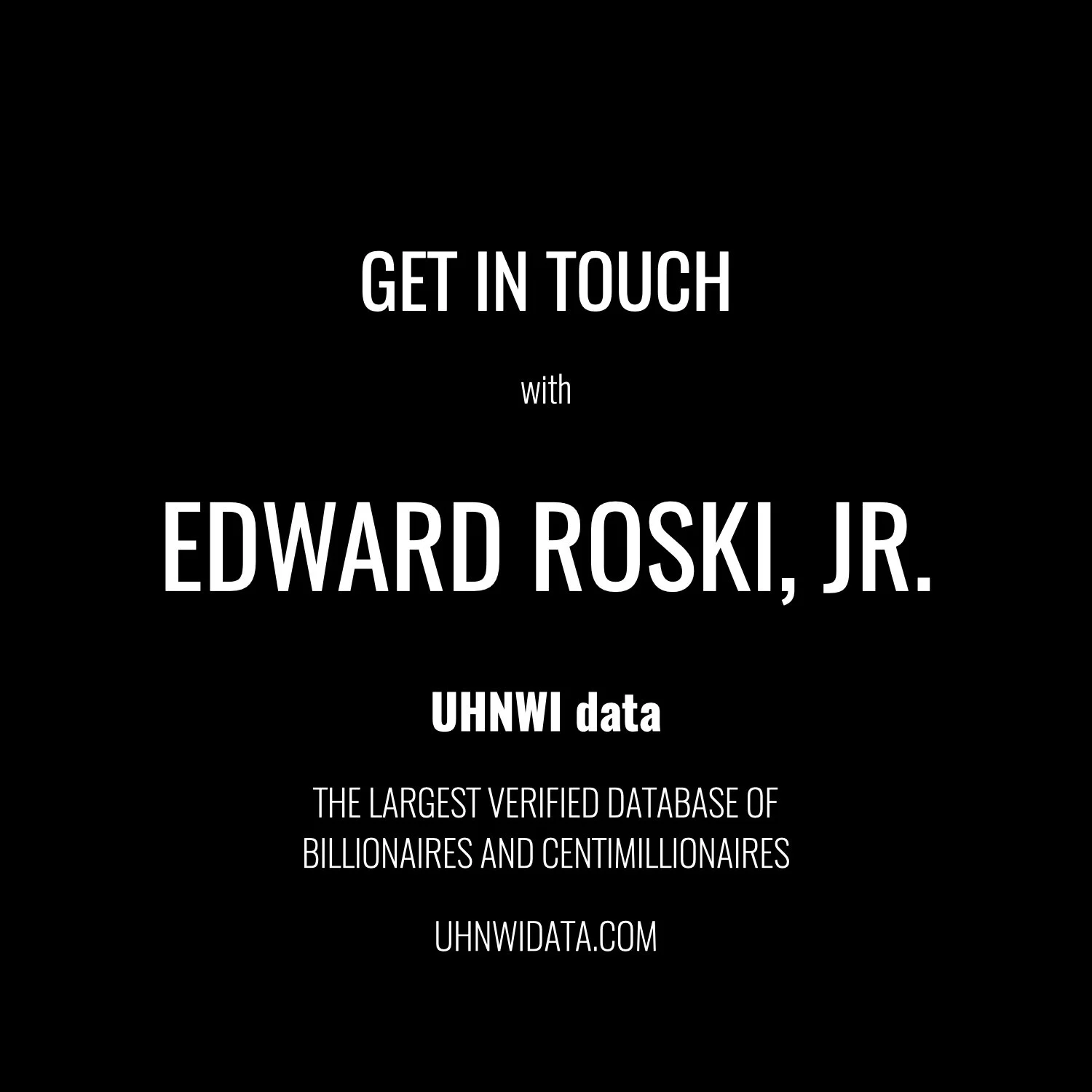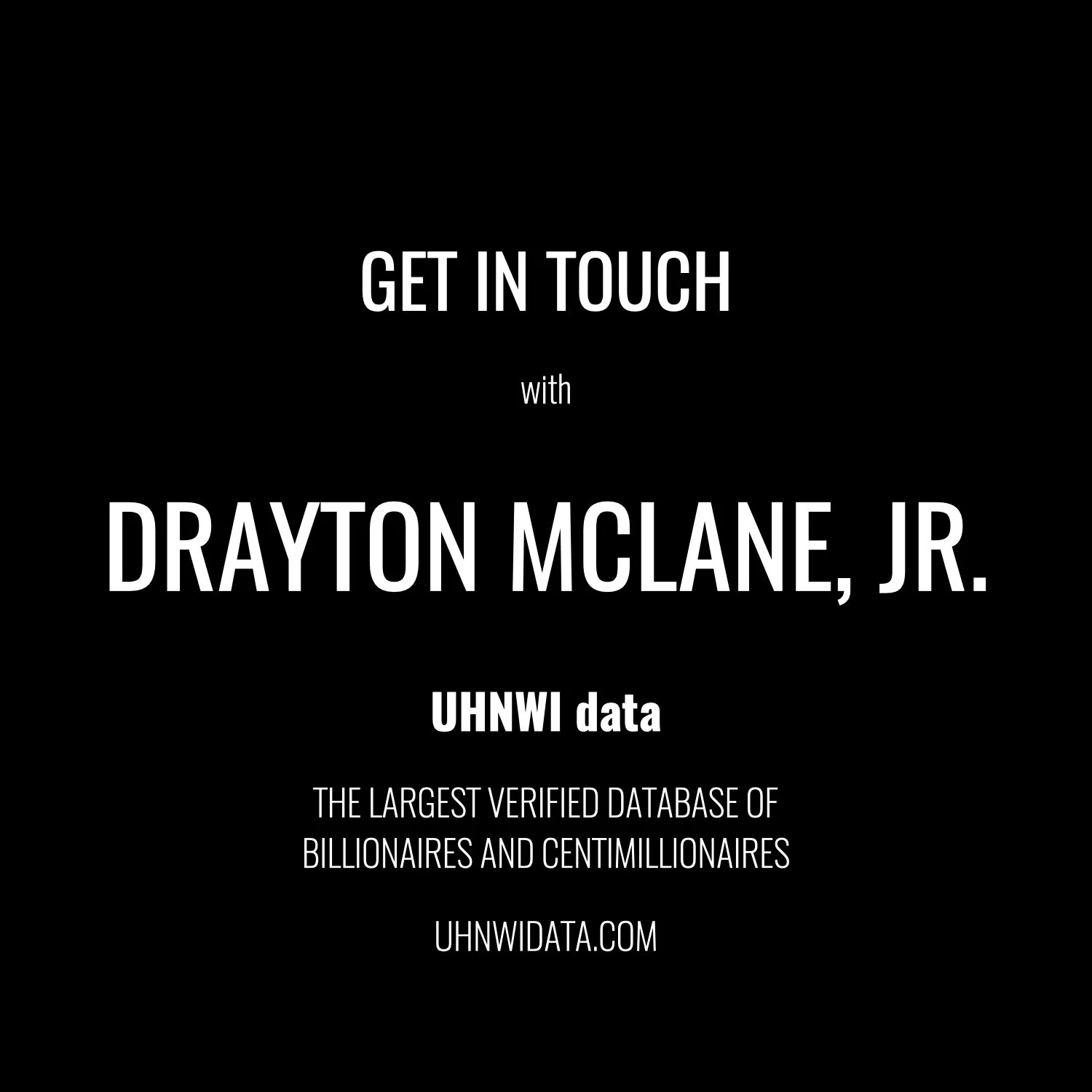Jerral Wayne Jones (born October 13, 1942) is an American billionaire businessman and sports executive who has served as the owner, president, and general manager of the National Football League's Dallas Cowboys since purchasing the franchise in 1989 for $140 million from H. R. "Bum" Bright.[1][2] Prior to acquiring the team, Jones amassed his fortune in the oil and gas industry through entrepreneurial ventures in Arkansas and Oklahoma, following a college football career as an offensive lineman at the University of Arkansas, where he contributed to a national championship claim in 1964.[3] Under his stewardship, the Cowboys achieved three Super Bowl victories (XXVII in 1993, XXVIII in 1994, and XXX in 1996), along with five appearances in the NFC Championship Game, revitalizing "America's Team" into a global brand while pioneering aggressive revenue strategies that elevated the franchise to a valuation of $13 billion—the highest for any professional sports team worldwide—as of August 2025.[4][5] Jones's hands-on management, including direct involvement in personnel decisions and marketing innovations like the construction of AT&T Stadium, earned him induction into the Pro Football Hall of Fame in 2017, though his approach has drawn criticism for contributing to prolonged playoff droughts since the mid-1990s dynasty.[6][7]
Early Life and Education
Childhood and Family Background
Jerry Jones was born Jerral Wayne Jones on October 13, 1942, in Los Angeles, California, to Arminta Pearl Clark Jones and J. W. "Pat" Jones, the latter of whom had risen from a poor family background to establish entrepreneurial ventures.[8][3] The family relocated to North Little Rock, Arkansas, in 1945, where Pat Jones owned and operated Pat's Grocery Store, providing early exposure to small-scale retail operations amid modest circumstances that emphasized practical self-reliance.[8][9] Pat Jones later expanded into insurance, founding a company that reflected a pattern of risk-taking and diversification Jones would echo, though these developments occurred primarily after Jones's formative years in Arkansas.[10][11]
Growing up in North Little Rock, Jones was immersed in his family's enterprises, including the grocery business, which involved hands-on involvement in sales and management from an early age, fostering familiarity with deal-making and customer interactions in a competitive local economy.[9][3] His parents' progression from limited resources to ownership of multiple ventures—spanning groceries and eventually insurance—highlighted a household ethos of bootstrapping opportunities, with Pat Jones serving as a direct model of turning modest starts into sustainable income streams.[11][10]
At North Little Rock High School, from which he graduated in 1960, Jones participated actively in athletics, playing as a running back on the football team (wearing number 33) and competing in basketball, experiences that underscored a competitive drive cultivated alongside his family's emphasis on perseverance.[12][13] These high school years, set against the backdrop of mid-20th-century Arkansas, including the state's school integration tensions in 1957 where Jones appeared in a contemporaneous photograph among white students confronting Black peers, reflected the social environment of his youth without altering the core family-oriented trajectory toward self-made enterprise.[14][15]
College Years and Athletic Career
Jones enrolled at the University of Arkansas in the early 1960s on a football scholarship and played for the Razorbacks under head coach Frank Broyles. Initially recruited as a running back, he transitioned to offensive guard, lettering in the sport all four years from 1962 to 1965.[16][17]
During his senior season in 1964, Jones served as co-captain of the undefeated Razorbacks squad (11-0 regular season record), which secured a share of the national championship according to some selectors after rallying to defeat Nebraska 10-7 in the Cotton Bowl Classic on January 1, 1965.[18][19] His contributions on the offensive line helped anchor a team known for its defensive prowess and late-game resilience, including a game-winning field goal in the Cotton Bowl.[20]
Amid his athletic demands, Jones maintained academic focus, graduating in 1965 with a Bachelor of Science degree in business administration from the Sam M. Walton College of Business.[7][21] This educational foundation, combined with his on-field leadership experience, positioned him for early career ventures in sales following graduation.[22]
Business Career Before the Cowboys
Entry into Oil and Gas
After graduating from the University of Arkansas in 1965, Jerry Jones entered the oil and gas industry as a wildcatter, founding Jones Oil and Land Lease in Arkansas during the early 1970s to pursue exploratory drilling in undervalued prospects.[23][24] He committed personal capital to high-risk ventures, targeting geological formations overlooked by larger operators, such as a tract in northwest Oklahoma where prior drillers had abandoned efforts; this bet yielded a successful strike by the early 1970s, transitioning his focus toward natural gas production amid volatile market conditions including the 1973 oil embargo.[25][23]
Jones's approach emphasized leveraged stakes in promising leases, achieving an unusually high initial success rate by drilling 12 productive wells out of his first 13 attempts in Arkansas and Oklahoma fields, which generated millions in revenues despite the era's economic pressures from oil price shocks.[23] This outcome stemmed from targeted seismic analysis and persistence in frontier plays rather than inheritance or diversified portfolios, as Jones operated without significant family wealth in energy, relying instead on calculated risks in wildcatting where failure rates typically exceed 90 percent industry-wide.[25][26]
By the 1980s, these operations scaled through strategic acquisitions, including oil and gas leases in the Arkoma Basin purchased for $15 million in 1982; Jones invested an additional $35 million in development before selling assets profitably, culminating in a 1986 divestiture of related holdings for $175 million via his Arkoma Production Co.[27][28] Such transactions, funded by reinvested drilling proceeds, built a fortune estimated in the tens of millions, enabling his leverage of personal guarantees for larger deals without reliance on external bailouts or subsidies.[29][30]
Expansion into Real Estate and Diversification
In the mid-1970s, Jones expanded beyond oil exploration by investing in real estate, leveraging early profits to develop residential and commercial properties in Arkansas and Texas as a hedge against the sector's price volatility.[3] These ventures, including property flips and developments, provided stability during oil market fluctuations and contributed to his recovery from prior financial setbacks tied to loans and interest obligations.[31] By this period, Jones had established himself as a significant figure in real estate alongside his oil operations.[3]
Jones further diversified into banking during the same era, participating in financial institutions that complemented his resource-based holdings and enhanced liquidity management.[3] This strategic broadening reduced reliance on oil revenues, which faced risks from geopolitical events and supply gluts, such as the late-1970s production surges. Concurrently, major oil lease sales, including a 1982 acquisition for $15 million followed by $35 million in additional investments and a 1986 divestiture yielding $75 million, generated capital reinvested into these non-energy assets.[29]
Through prudent leverage and asset trades rather than high-risk speculation, Jones transformed oil windfalls into a diversified portfolio encompassing real estate, banking, and residual energy stakes, amassing hundreds of millions in value by the late 1980s.[30] This financial base enabled a $90 million cash contribution toward the 1989 Dallas Cowboys purchase, representing nearly his entire liquid holdings at the time and underscoring the scalability of his pre-sports business model.[30]
Acquisition and Revitalization of the Dallas Cowboys
Purchase and Immediate Overhaul
On February 25, 1989, Jerry Jones acquired the Dallas Cowboys from H.R. "Bum" Bright for $140 million, marking the largest transaction for an NFL franchise at the time.[2][32] The team had endured mediocre on-field performance, posting a 3-15 record in the 1988 season amid broader struggles including mounting debt and monthly operating losses estimated at $1 million.[33][34] These financial pressures stemmed from stagnant revenue streams constrained by NFL-wide marketing restrictions and conservative franchise management, which limited sponsorship opportunities and left the Cowboys vulnerable during an economic downturn in oil-dependent regions.[30][35]
Jones, an oil and gas entrepreneur with no prior NFL experience, immediately disrupted entrenched operations by firing longtime head coach Tom Landry and general manager Tex Schramm on February 26, 1989—the day after closing the deal—and installing his University of Arkansas college roommate, Jimmy Johnson, as both coach and de facto personnel executive.[36][37] This outsider-led purge challenged NFL norms of institutional continuity, as Landry had coached for 29 years and Schramm had shaped the franchise since its 1960 inception, but Jones prioritized direct control to enable rapid restructuring over deference to tradition.[38][39] Johnson's recruitment facilitated aggressive talent acquisition, including drafting quarterback Troy Aikman first overall in the 1989 NFL Draft and running back Emmitt Smith 17th overall in 1990 (via a prior trade asset), complementing holdover wide receiver Michael Irvin to form the core of future offensive firepower.[40][41]
Jones's overhaul extended to commercial operations, where he bypassed league-centralized marketing by securing individual sponsorships—such as early deals with American Airlines and Nike—that defied NFL conservatism and injected direct revenue into the franchise.[35] This approach, rooted in Jones's private-sector experience, reversed the bleeding losses within roughly two years by expanding income sources beyond ticket sales and basic broadcasting, though initial skepticism from league insiders predicted operational chaos from the unorthodox integration of ownership and front-office roles.[42][29] The financial pivot demonstrated that decoupling revenue generation from league oversight enabled causal drivers of profitability, such as localized branding and partner incentives, over reliance on collective bargaining uniformity.[30]
Infrastructure Investments and Marketing Innovations
Following the acquisition of the Dallas Cowboys in 1989 for $140 million, Jerry Jones invested heavily in state-of-the-art facilities to enhance operational efficiency and generate ancillary revenue streams. AT&T Stadium, completed in 2009 at a construction cost of $1.3 billion, features a retractable roof and advanced video boards, enabling year-round events that have driven significant tourism and non-game income for the franchise.[43][5]
In 2016, Jones opened The Star in Frisco, Texas, a $1.5 billion complex serving as the team's headquarters, practice facility, and performance academy, integrated with surrounding real estate developments to create a self-sustaining entertainment district.[44][45] These investments have positioned the Cowboys to derive substantial revenue from venue leasing, events, and adjacent properties, with non-game sources—including sponsorships—reaching approximately $300 million annually by 2024, surpassing all NFL peers.[46]
Jones pioneered aggressive, team-specific marketing strategies that bypassed traditional NFL revenue sharing, signing exclusive sponsorships with Nike and Pepsi in 1995 valued at around $40 million over multiple years, which allowed the Cowboys to retain full proceeds rather than pooling with the league.[47] This approach extended to global branding efforts, cheerleader merchandise expansion, and multimedia deals, contributing to the franchise's total revenue of $1.2 billion in 2024—nearly $500 million ahead of the next NFL team—and elevating its valuation to $13 billion by August 2025, a stark contrast to the $140 million purchase price.[5][5] Empirical metrics underscore the causal impact: the Cowboys' emphasis on integrated real estate and proprietary sponsorships has made non-game income a dominant revenue driver, validating the facilities' role in the franchise's financial ascent beyond mere spectacle.[46][48]
Leadership and Performance of the Dallas Cowboys
On-Field Achievements and Strategic Decisions
Under Jerry Jones's ownership since 1989, the Dallas Cowboys secured three Super Bowl victories in the early 1990s, defeating the Buffalo Bills in Super Bowl XXVII on January 31, 1993 (52-17), the Bills again in Super Bowl XXVIII on January 30, 1994 (30-13), and the Pittsburgh Steelers in Super Bowl XXX on January 28, 1996 (27-17).[4] These triumphs, achieved through strategic roster enhancements under head coach Jimmy Johnson, including the acquisition of quarterback Troy Aikman, running back Emmitt Smith, and wide receiver Michael Irvin—core elements of the team's offensive triad—marked a rapid turnaround from pre-ownership struggles, with the franchise posting a 1-15 record in 1989 before building to 13 regular-season wins in 1992.[4]
Jones's oversight facilitated consistent on-field competitiveness, with the Cowboys accumulating 319 regular-season wins against 262 losses through the 2024 season, alongside 18 playoff appearances over 36 full seasons of ownership (a precise 50% qualification rate).[49][50] This sustained performance included multiple NFC East division titles, such as four between 2016 and 2023, driven by post-2010 rebuilds emphasizing draft selections like fourth-round quarterback Dak Prescott in 2016 (who threw for over 4,000 yards in his rookie year) and running back Ezekiel Elliott in the same draft's fourth overall pick, yielding 1,631 rushing yards as a rookie.
Strategic decisions highlighted Jones's willingness to pursue high-reward talent acquisitions, exemplified by signing free-agent cornerback Deion Sanders on September 9, 1995, to a seven-year, $35 million contract—the richest for a defensive player at the time—which bolstered the secondary and contributed directly to the Super Bowl XXX defense that allowed just 13.3 points per game during the regular season.[51] Complementing such free-agency aggression, Jones approved first-round draft picks like outside linebacker DeMarcus Ware (11th overall in 2005), who amassed 117 sacks over nine seasons with the Cowboys, anchoring defenses that led the NFL in takeaways multiple times.[52] These moves, paired with adept salary cap management—restructuring contracts to maintain contention without excessive dead money—enabled annual NFC prominence, as evidenced by the team's progression to the NFC Championship Game in 2021 and 2022.
The integration of Jones's dual ownership-general manager role fostered synergies between on-field execution and player development, such as leveraging star branding for motivation and retention, which correlated with the Cowboys' franchise valuation reaching $13 billion in 2025—the highest in professional sports—reflecting sustained competitive viability over consensus-driven roster caution.[5]
Criticisms of Management Style and Roster Building
Jerry Jones has faced significant criticism for his dual role as owner and general manager since acquiring the Dallas Cowboys in 1989, with detractors arguing that his hands-on interference undermines professional personnel decisions and contributes to the team's inability to secure a Super Bowl title since the 1995 season.[53][54] This 30-year drought, the longest among NFL teams with multiple championships, is often attributed to post-dynasty missteps following the departure of coach Jimmy Johnson, including Jones' reluctance to delegate authority to specialized executives.[55][56] Critics, including NFL agents and analysts, contend that Jones' ego-driven approach leads to suboptimal hires and retentions, such as prolonging Jason Garrett's head coaching tenure from 2010 to 2019 despite consistent underperformance in playoffs, with the team failing to advance beyond the divisional round in that span.[57][58]
Roster construction under Jones has drawn scrutiny for favoring high-profile, aging or injury-prone veterans through lucrative extensions, constraining salary cap flexibility and contributing to defensive vulnerabilities. For instance, the 2025 season's trade of star pass rusher Micah Parsons—Jones' decision to prioritize financial "ammo" for future moves—exacerbated pass rush deficiencies, with the Cowboys surrendering high yardage totals in early games amid a 3-3-1 record through mid-October.[59][60][61] Previous cap crunches from deals like quarterback Dak Prescott's extension have similarly limited free agency splurges, forcing reliance on drafts that yield inconsistent results due to perceived overvaluation of Jones' scouting acumen.[62][63]
Jones' frequent, high-visibility press conferences have been lambasted as distractions that foster a "soap opera" atmosphere, diverting focus from on-field preparation and amplifying internal narratives over strategic silence.[64][65] In 2025, amid trade deadline speculation post-Parsons deal, Jones' public comments on roster flexibility drew ire for signaling desperation rather than cohesion.[66]
While these critiques highlight causal links between Jones' micromanagement and playoff failures—evident in the Cowboys' 12-5 regular-season records from 2021-2023 yielding no NFC Championship appearances—defenders note empirical successes like the franchise's status as the NFL's most valuable at over $10 billion, sustained contention via cost-controlled drafts, and market constraints where player leverage in free agency inflates contracts regardless of ownership.[67][56] Jones himself acknowledged accountability for early 2024 stumbles, though such admissions have not quelled perceptions of systemic overconfidence ignoring specialized GM precedents in peer franchises.[68][69]
Legal and Regulatory Conflicts with the NFL
In November 1995, Jerry Jones filed a $750 million antitrust lawsuit against the NFL and NFL Properties, alleging that the league's group licensing agreements unlawfully restricted individual teams from pursuing independent sponsorship deals, such as his separate arrangements with Nike and Pepsi.[70] The NFL responded with a $300 million countersuit, claiming Jones violated league rules by bypassing collective marketing structures.[71] The disputes, rooted in Jones's push for greater owner autonomy in commercial ventures, were settled out of court in December 1996, granting teams expanded rights to negotiate their own sponsorships and contributing to the NFL's subsequent revenue surge through diversified marketing.[72] [73]
Jones's confrontational approach extended to internal governance, notably in 2017 when he publicly opposed extending NFL Commissioner Roger Goodell's contract amid disputes over discipline policies, including the handling of Ezekiel Elliott's suspension.[74] A group of fellow owners issued a cease-and-desist warning to Jones, threatening penalties for his efforts to block the extension and influence league operations. The standoff resolved with Goodell's re-signing on a five-year, $200 million deal in December 2017, after Jones secured concessions on issues like domestic violence protocols.[74] These tensions highlighted Jones's strategy of leveraging public commentary and negotiation leverage to reform restrictive policies, often at the cost of short-term friction but yielding long-term structural changes favoring owner revenues.
Regulatory disputes have also involved allegations of procedural violations. In 2025, Jones faced accusations of breaching the collective bargaining agreement by directly negotiating with linebacker Micah Parsons, bypassing the player's agent, though no formal fine was imposed as Jones maintained it fell within his authority as owner.[75] Such incidents reflect a pattern where Jones's hands-on style tests league boundaries on player dealings and public disclosures, contributing to fines exceeding $250,000 in isolated cases like a 2025 obscene gesture penalty, but primarily serving to challenge and evolve NFL operational norms.[76] Overall, these conflicts underscore Jones's role in prioritizing competitive and financial innovations, such as enhanced media rights negotiations, which have boosted league-wide earnings despite periodic sanctions.
Broader Business Empire and Investments
Energy Sector Holdings
Jones maintains a substantial stake in Comstock Resources, Inc. (NYSE: CRK), a Frisco, Texas-based independent natural gas producer, where affiliated entities own approximately 71.1% of the company's outstanding shares as of April 2025.[77] He acquired majority control in May 2018 by contributing oil and gas properties valued at $620 million in exchange for equity, solidifying his position as the dominant shareholder.[78] This holding traces back to earlier wildcatting ventures but has expanded post-1989 through targeted investments in natural gas exploration, particularly in the Haynesville Shale formation spanning Louisiana and East Texas.[79]
In March 2024, Jones injected $100.5 million in additional equity into Comstock, elevating his ownership to 67% at the time and enabling debt reduction to support drilling activities.[80] The company, under his influence, has pursued aggressive natural gas development, including new wells in East Texas and asset optimizations like the September 2025 divestiture of certain Haynesville acreage to streamline operations.[81] This focus on natural gas aligns with pragmatic adaptations to market shifts, positioning assets for potential LNG export demand amid global energy transitions, as evidenced by Comstock's production emphasis on low-cost shale reserves.[82]
Beyond Comstock, Jones owns Arkoma Drilling Company, a Dallas-headquartered firm through which he has committed over $1 billion to drilling rigs and operations across U.S. basins, sustaining his hands-on approach to exploration.[83] These energy interests have benefited from 2024-2025 commodity price volatility, with natural gas markets providing returns that bolster his portfolio resilience.[84] Forbes attributes energy as a core component of his $19.6 billion net worth in September 2025, alongside Cowboys valuation, reflecting the empirical longevity of his risk-tolerant wildcatting strategy.[85]
Jones's commitment earned him the Energy Workforce & Technology Council's 2025 Platinum Award in April 2025, recognizing his leadership in advancing domestic natural gas production and industry innovation.[86]
Real Estate Developments and Other Ventures
Blue Star Land, the real estate development firm owned by Jerry Jones and his family, focuses on acquiring and developing land for mixed-use projects, retail, residential, and industrial purposes primarily in the Dallas-Fort Worth area.[87] Established as a key vehicle for Jones's property investments, the company has pursued strategic land purchases in growing suburbs like Frisco, Prosper, and Waxahachie, transforming raw acreage into revenue-generating assets through partnerships and phased developments.[88] These efforts emphasize high-density, amenity-rich communities that capitalize on regional population growth and infrastructure improvements.[89]
In Prosper, Texas, Blue Star Land has advanced the Gates of Prosper mixed-use development, which includes residential, retail, and commercial components; in April 2024, the firm announced plans to add nearly $19 million in retail space to the project, enhancing its commercial viability.[90] Another initiative in the area, Star Trails, encompasses plans for 1,800 home lots across multiple phases, with initial construction targeted to leverage proximity to major highways.[91] In June 2023, Blue Star Land proposed a mixed-use project centered around preserved historic silos in Prosper, integrating residential units, retail outlets, and public spaces to preserve local heritage while driving economic activity.[89] Further south, the firm acquired over 120 acres along Interstate 35E in Waxahachie for potential mixed-use expansion, collaborating with developers like Lincoln Property Company.[92]
Expanding into industrial real estate, Blue Star Land purchased significant acreage east of Dallas in 2022 to develop an industrial park, targeting logistics and manufacturing tenants amid rising demand in the region.[93] In Frisco, the company has assembled holdings including a 100-acre tract east of the Dallas North Tollway acquired in 2019, positioned for retail and residential growth near emerging economic hubs.[94] These developments provide diversified income streams from leases and sales, buffering against sector-specific fluctuations in sports and energy by prioritizing long-term appreciation in high-growth zones.[83]
Beyond core real estate, Jones has pursued complementary ventures in technology and hospitality. In July 2022, an investment fund affiliated with Jones committed significant capital to Guesty, a software platform for managing independent hotels and vacation rentals, aiming to streamline operations in the short-term lodging sector.[95] Such investments reflect a strategy of integrating digital tools with property-related businesses, though specific returns remain undisclosed. Retail partnerships within Blue Star Land projects further extend this scope, incorporating branded outlets and experiential commerce to boost occupancy and foot traffic.[96]
Personal Life and Public Persona
Family Dynamics and Succession Planning
Jerry Jones has been married to Eugenia "Gene" Chambers since 1963, having met her during their time as undergraduates at the University of Arkansas, where she was named Miss Arkansas.[97][11] The couple has three children, all of whom hold executive positions within the Dallas Cowboys organization and serve as co-owners: Stephen Jones, born in 1965, as chief operating officer and executive vice president directing player personnel; Charlotte Jones as executive vice president and chief brand officer, overseeing marketing and fan engagement; and Jerry Jones Jr. as chief commercial officer, managing sales and sponsorships.[98][99][100]
The Jones grandchildren, numbering ten as of 2025, have shown early involvement in Cowboys activities, reflecting a multi-generational family structure. For instance, Charlotte's son Paxton Anderson, a former University of Texas Longhorns player, influenced the team's 2023 draft selection of linebacker DeMarvion Overshown through personal endorsement, highlighting informal family input in scouting.[101][102] Other grandchildren, such as those from Stephen and Jerry Jr., participate in operational or promotional capacities, though none hold formal executive roles yet.[103]
Succession planning has gained urgency by 2025, with Jerry Jones at age 82, prompting discussions of continuity amid his hands-on leadership in football operations. Stephen Jones is positioned as the primary successor for general manager-like duties, having already managed player personnel decisions, though he stated in October 2024 that he does not actively contemplate assuming his father's GM role.[104][105][106] Ownership would transfer to Gene Jones and the three children equally upon Jerry's death, with minimal reported internal conflicts supporting a cohesive transition.[104][107] Family integration via these roles has sustained operational stability, evidenced by Charlotte's contributions to the Cowboys' branding valuation exceeding $9 billion in franchise worth, balancing nepotistic appointments with demonstrated competencies in their domains.[100][108]
Philanthropic Efforts and Political Engagements
Jerry Jones and his family have established several charitable foundations focused on youth development, education, and health initiatives, often tied to the Dallas Cowboys organization. The Gene and Jerry Jones Family Arlington Youth Foundation, launched in 2009, pledged $16.5 million over 33 years to support nonprofit organizations serving Arlington youth through grants for programs in education, health, and community services.[109] The Gene and Jerry Jones Family Foundation, based in Frisco, Texas, has distributed millions in grants annually, including $7.57 million in contributions in recent years to causes such as scholarships and youth programs.[110] In 2010, the family endowed the North Texas Youth Education Town with a $1 million grant as a legacy of Super Bowl XLV, funding educational resources for local youth.[111]
These efforts extend to Cowboys-linked charities, which have supported health initiatives like combating homelessness and providing scholarships, with the family committing resources through Dallas Cowboys Charities since the 1990s.[112] Jones's philanthropy aligns with pragmatic benefits, including tax advantages and network-building in Texas business circles, while prioritizing local Arkansas and Dallas-area causes reflective of his upbringing in a conservative, rural environment.[113]
Politically, Jones has been a consistent Republican donor, contributing almost exclusively to GOP candidates and causes, including support for Texas Republicans and federal figures.[113] He donated a seven-figure sum to Donald Trump's 2025 inauguration committee, underscoring his backing of Trump from 2016 onward amid broader NFL owner trends leaning Republican in the 2023-2024 election cycle.[114][115][116] In 2020, Jones rebuffed questions about his Republican support with a blunt dismissal, emphasizing personal conviction over external pressures.[117]
Jones's political engagements intersect with NFL controversies, particularly national anthem protests. In 2018, he enforced a policy requiring Cowboys players to stand "toe on the line" during the anthem, opposing kneeling as disruptive amid President Trump's criticisms of the league.[118] Though he briefly kneeled with the team before the anthem in 2017 for unity, his stance hardened against in-game protests, reflecting resistance to perceived left-leaning cultural shifts in the NFL despite pressures from players and media.[119][120] By 2020, he adopted a more flexible "show grace" approach but maintained opposition to actions dividing fans, prioritizing business stability over progressive activism.[121] This positioning, rooted in his self-made ethos from Arkansas oilfields, contrasts with biases in mainstream sports media that often frame conservative NFL owners as outliers.[116]
Legacy and Recognition
Awards and Hall of Fame Inductions
Jerry Jones was inducted into the Pro Football Hall of Fame as part of the Class of 2017, recognizing his transformative ownership of the Dallas Cowboys since 1989, during which the franchise achieved three Super Bowl victories and became the NFL's most valuable team, currently estimated at $13 billion.[4][122] In 2013, he became a charter inductee into the National Football Foundation's Leadership Hall of Fame, honoring his lifetime contributions to football leadership and administration.[123] These inductions underscore Jones' role in elevating the Cowboys' economic stature, with the team's value increasing dramatically from his $140 million purchase price to billions under his stewardship.[4]
In 2014, Jones received the Horatio Alger Award, which celebrates distinguished Americans who have succeeded despite adversity, highlighting his self-made path from oil exploration ventures to NFL ownership.[3] He was also inducted into the Arkansas Business Hall of Fame, acknowledging his early business successes in his home state, including founding an oil and gas company that laid the foundation for his sports investments.[124] Forbes has consistently listed Jones among the world's billionaires since the early 2000s, with his net worth reaching $19.6 billion as of 2025, primarily derived from the Cowboys' franchise value and related enterprises, affirming the empirical success of his business strategies over on-field performance alone.[122]
Economic Impact and Long-Term Influence
Jerry Jones's acquisition of the Dallas Cowboys in 1989 for $140 million represented a pivotal investment that yielded an approximate 93-fold return by 2025, with the franchise valued at $13 billion, far outpacing the NFL's average team value of $7.1 billion.[5][125] This disparity underscores how Jones's emphasis on aggressive marketing, sponsorship diversification, and stadium development—exemplified by the 2009 opening of AT&T Stadium, which generates over $300 million annually in non-game-day revenue—elevated the Cowboys as a standalone business entity, indirectly lifting league-wide valuations through demonstrated revenue potential.[126] His challenges to the NFL's centralized marketing model in the 1990s, including lawsuits against the league for antitrust violations, compelled a shift toward owner-driven commercialization, contributing to the NFL's overall revenue surge from $2.5 billion in 1990 to over $20 billion by 2025.[127][47]
While Jones's polarizing management—marked by public feuds and resistance to external coaching hires—has drawn criticism for limiting on-field success since the 1990s dynasty, empirical financial metrics reveal a net positive disruption: the Cowboys' brand visibility, amplified by Jones's media savvy, sustains premium advertising rates and global merchandising that other franchises emulate, countering narratives of underachievement with tangible wealth creation.[48] The 2025 Netflix documentary America's Team: The Gambler and His Cowboys encapsulates this dual legacy, portraying Jones as both a gambler who rebuilt a franchise from near-bankruptcy and a stubborn innovator whose tactics prioritized economic scalability over consistent titles.[128] Critics from traditionalist sports media, often biased toward on-field purity over business acumen, overlook how his model has normalized active owner involvement, fostering league-wide activism on issues like labor negotiations and media rights, which secured $110 billion in TV deals through 2033.[129]
Looking ahead, Jones's long-term influence hinges on succession dynamics, with his son Stephen Jones positioned as COO to maintain the commercial momentum amid an aging ownership class across the NFL. Empirical evidence of value appreciation—driven by causal factors like Jones's pioneering of team-specific sponsorships and experiential revenue—suggests his blueprint will endure, as evidenced by the league's 25% average valuation increase in 2025 alone, outstripping broader market returns and validating the prioritization of disruptive entrepreneurship over consensus-driven stability.







